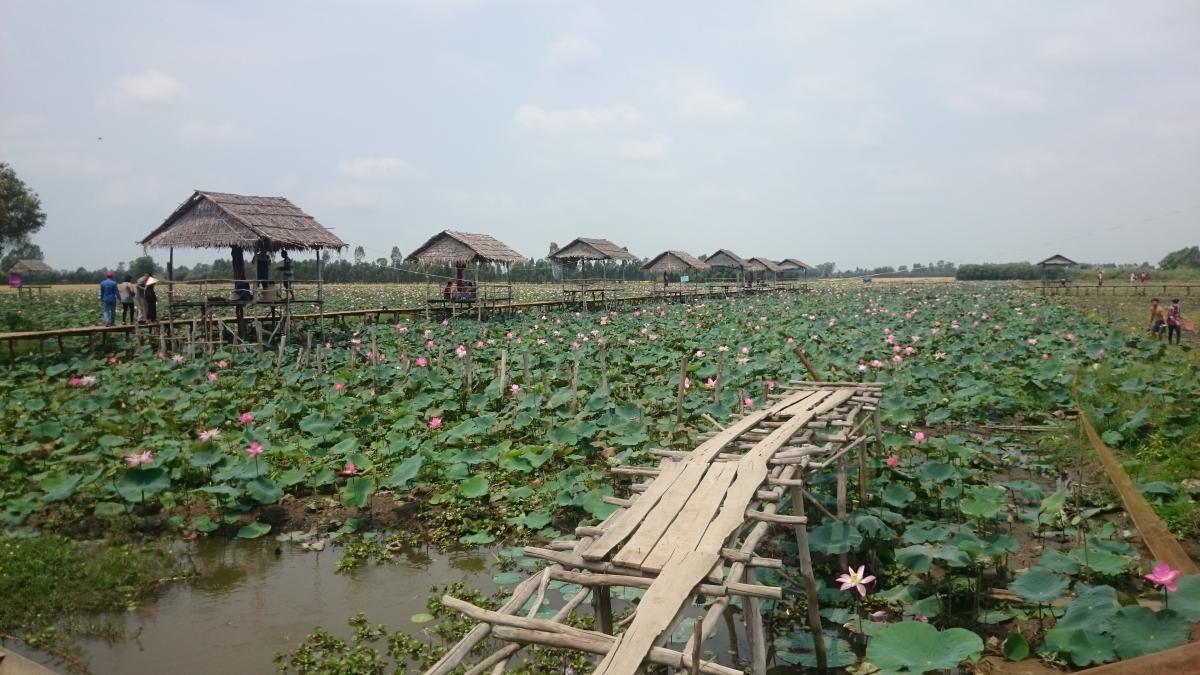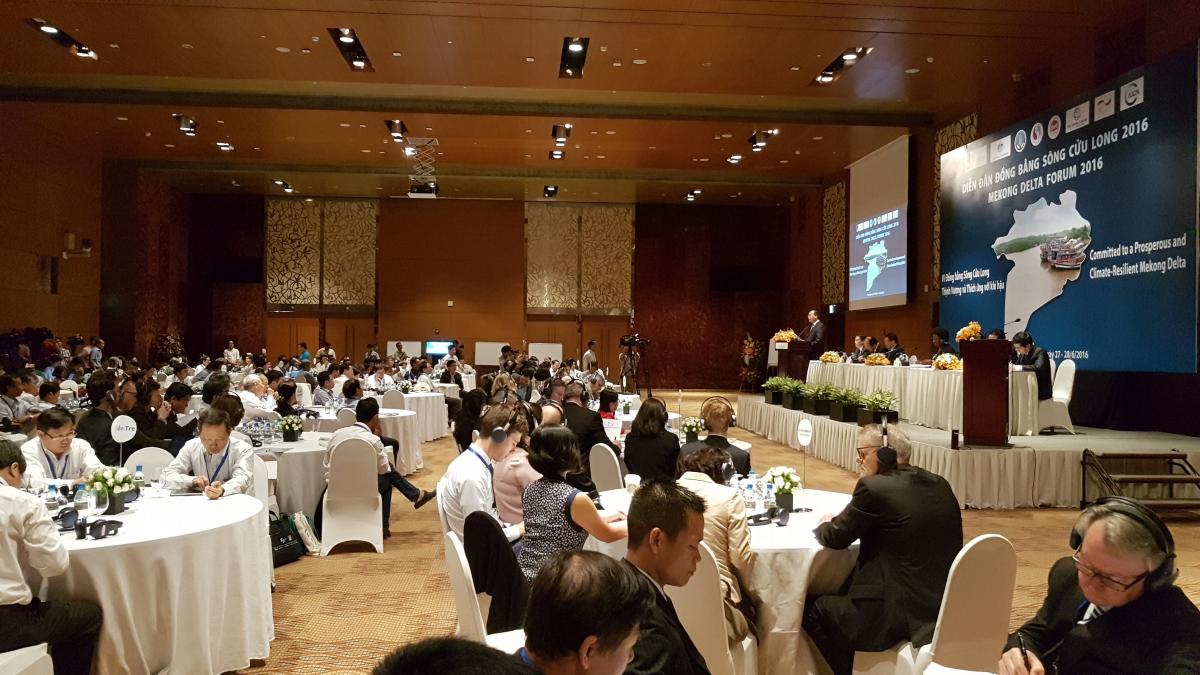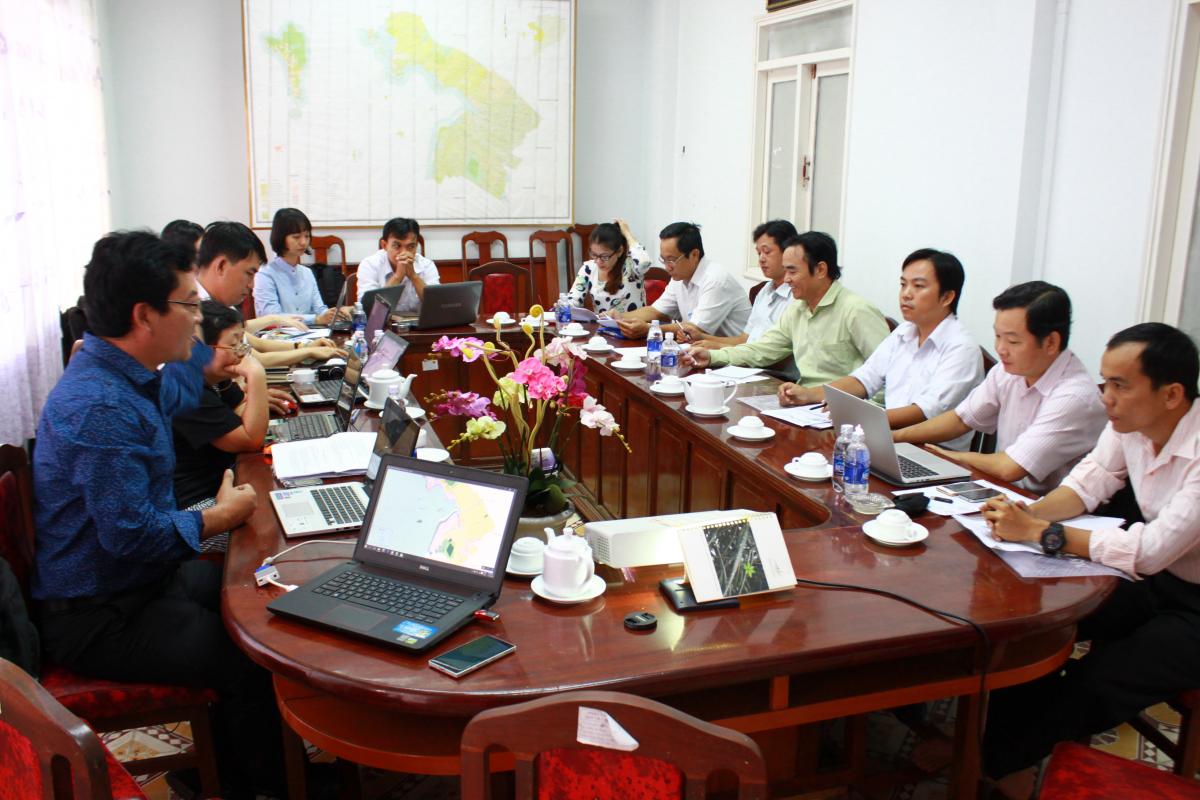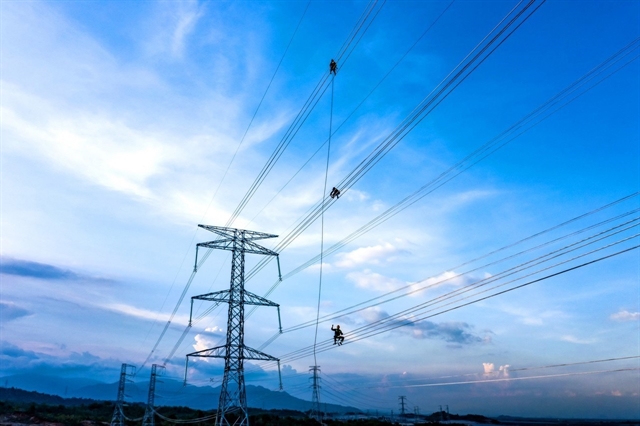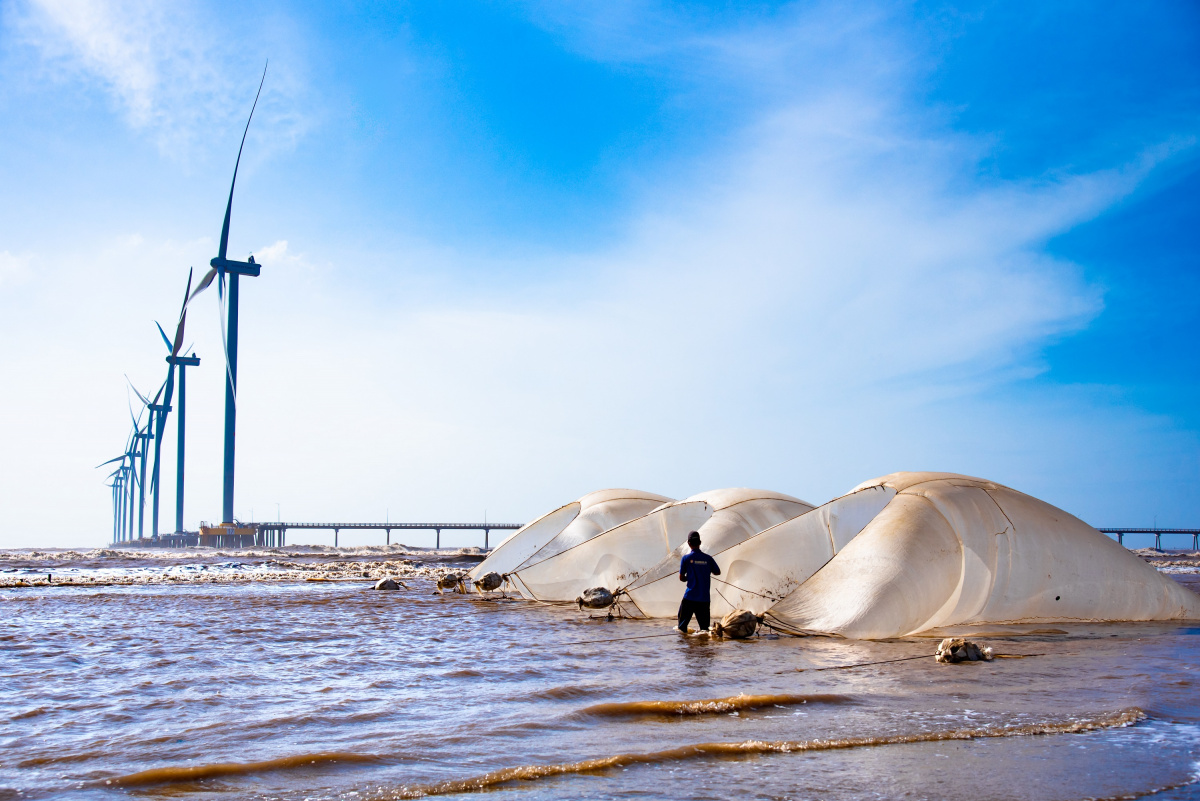Conserving the floods in the Mekong Delta: A story from the Vietnam component of the Integrated Planning to Implement the CBD Strategic Plan and Increase Ecosystem Resilience to Climate Change project
Intensive rice production is the predominant cause for the loss of biodiversity and resilience to climate change in the Vietnamese Mekong Delta. Today, less than 5% of the natural wetlands of the Delta remain. In order to intensively grow rice in the upper-delta deep flood zone, traditional low dyke systems that have supported 2 rice crops in a year while allowing floods to enter the dyke system in the flood season, have been converted into high dykes that displace the floods so that a third rice crop can be grown.
This costly hard infrastructure has disrupted the natural flood pulse of the Mekong Delta and reduced the amount of wetlands with devastating impacts on the aquatic biodiversity that underpins the fisheries livelihoods of particularly poor people, and the loss of sediment replenishment necessary for agricultural sustainability.
Between 2000 and 2011 alone, the deep flood zone in the upper delta spanning 2 provinces of An Giang and Kien Giang lost 42% (1,100 km2) of its total flood area to the building of high dykes for the third rice crop. In the same period, the lost fisheries value as a result of building the high dykes was estimated to be approximately $1,000 USD/ha.
And the displacement of the floods has resulted in increased downstream flood damages – in one case, the downstream city of Can Tho bore an additional 3 to 11 million USD in flood damages in 2011 that was attributable to the building of high dykes.
Climate change projections suggest the frequency and intensity of the floods are set to increase. In 2013, the Mekong Delta Plan (MDP), a Dutch supported study was the first official initiative to suggest that the third rice crop, which is driven by a high-level government policy for food security, should be abandoned in favor of flood-based land uses that would create large-scale flood-retention areas. Exactly how was not yet specified.
IUCN Vietnam, who had helped to facilitate public consultations of the MDP, together with a group of development partners including the World Bank backed the recommendations at the highest levels of government, yet through 2014 there was no demonstrable commitment to change.
In order to address the problem, we (IUCN Vietnam) had to work at two levels. First, we had to generate enough political consensus to change the rice policy to open up the possibility for alternative land use. Second, we had to demonstrate that there were viable flood-retention land uses that would be supported by farmers.
With support from the BMUB funded Integrated Planning project coordinated by the IUCN Environmental Law Centre, we began working with other development partners to generate political consensus and support by helping to facilitate a high-level dialogue called the Mekong Delta Forum (MDF) between the Ministries, the South West Steering Committee, the 13 provincial governments of the Mekong Delta, and development partners in early 2015. We supported a second Forum in June 2016.
The MDFs have succeeded in producing consensus from the highest levels that the rice intensification policy needed to change.
But what were the challenges involved? To assist in answering this question, we undertook a study of the third rice crop for our political partner, the South West Steering Committee who had co-chaired the MDF. The study documented the increasing external costs and marginal incomes of growing the third rice crop. Critically, farmers lacked viable alternative land uses and as a result continued their demands to expand the third rice crop area. We also produced a legal study that examined land use planning processes which found that socio-economic planning objectives including food security related directives involving intensifying rice growing was a key barrier for local land use planners to consider more biodiverse and climate resilient land uses.
Turning to focus on the challenge of alternative flood-retention livelihoods, we documented a number of integrated lotus farming systems that are both flood and drought resilient - up to twice as profitable than growing three rice crops and thereby strongly supported by farmers - that serve to conserve the flood area in rice growing landscapes.
These lotus farming models are now serving as the basis for a demonstration of enhanced land use planning processes that address the legal and regulatory issues that constrain more biodiverse and climate resilient land use planning.
Following the first MDF, through 2015 and into early 2016, our Integrated Planning project team, with it’s experience in documenting the challenges with the third rice crop and studying flood-retention livelihoods, assisted the Ministry of Agriculture and Rural Development with the design of a $310 million World Bank funded project to support the ideas that have come out of the MDP and MDF for paradigm-shifting land use changes in the Delta.
Here, our project team provided technical assistance to analyse the impact of investing in 70,000 ha of flood retention area utilising new flood-retention livelihoods in the upper delta, thereby conserving a corresponding amount of wetland area that would otherwise have been lost to the third rice crop.
The project interventions have assisted Vietnam in addressing 2 SDG goals. Specifically, Goal 13 to urgently combat climate change and it’s impacts, and Goal 15 to protect, restore, and promote sustainable use of terrestrial ecosystems and halt biodiversity loss.
By helping to build consensus and change mind-sets over the third rice crop and demonstrating the viability of (particularly farmer support) alternative flood-retention livelihoods to rice growing that culminated in securing investment in 70,000 ha of flood retention area, the project is helping to strengthen the resilience and adaptive capacity of the Mekong Delta (Goal 13.1) by helping to mitigate growing downstream flood risks from more intensive floods.
The high level dialogue involving the Ministries, SWSC and all 13 provinces of the Mekong Delta is assisting with a change in policy, specifically the rice intensification policies, that better enable the integration of climate change adaptation in land use planning (Goal 13.2) as well as educating and increasing the human and institutional capacity to address climate change (Goal 13.3).
These interventions have also helped to address Goal 15.1 (and CBD Aichi Target 7) with more sustainable use of inland freshwater ecosystems, specifically by conserving and avoiding fragmentation of the remaining wetlands in rice growing landscapes of the upper delta. This will also help to halt biodiversity loss, primarily aquatic biodiversity.
Story by Andrew Wyatt, IUCN Vietnam.
